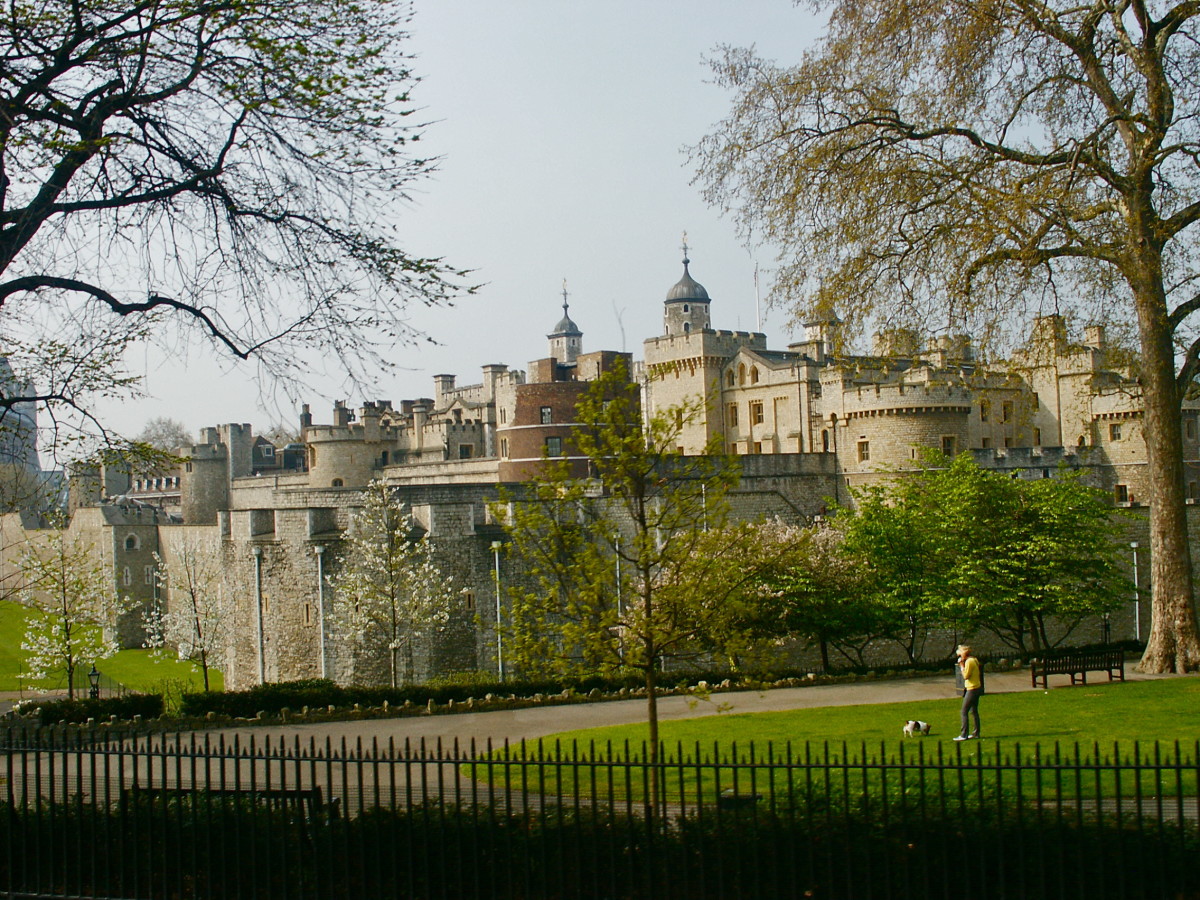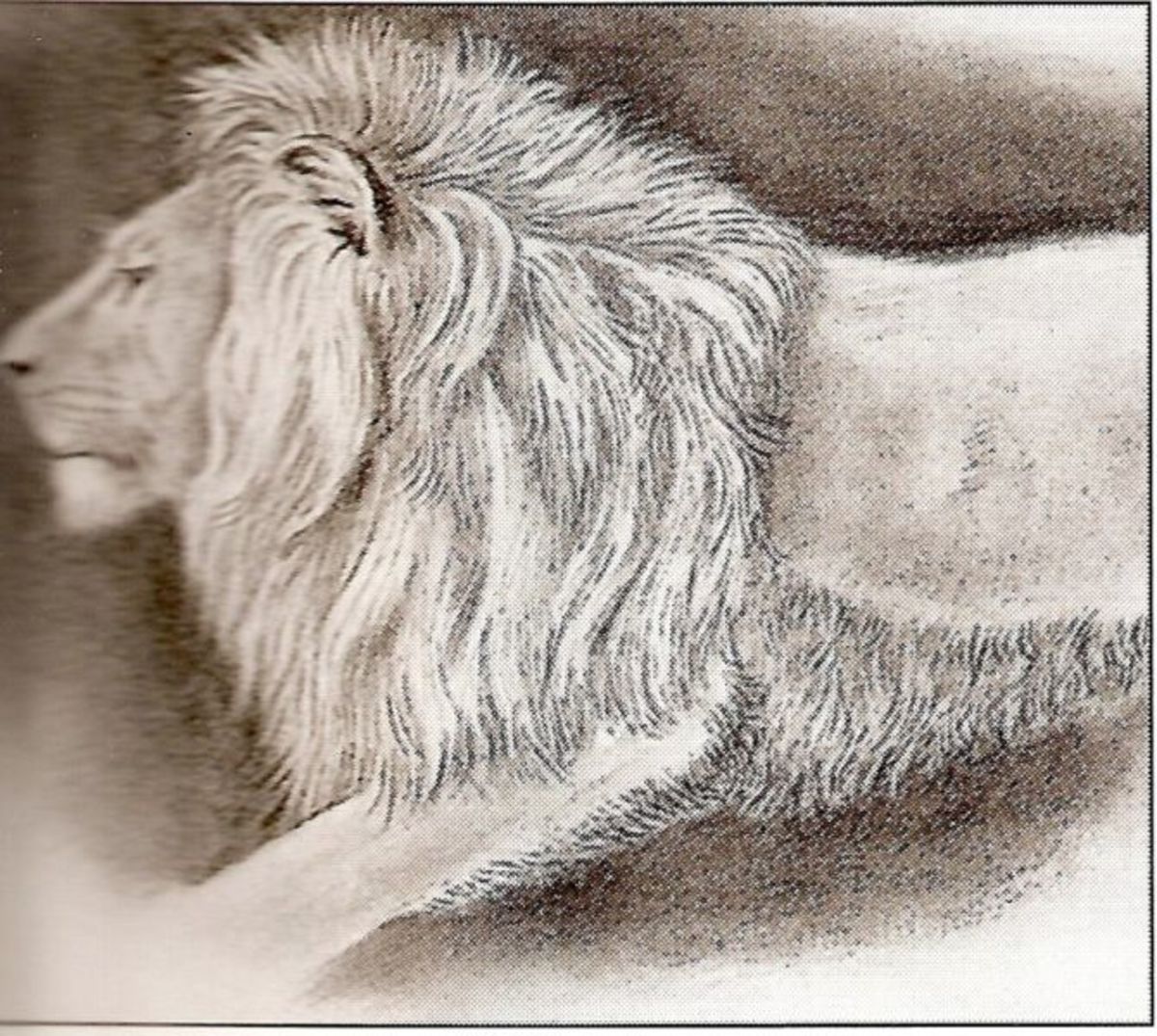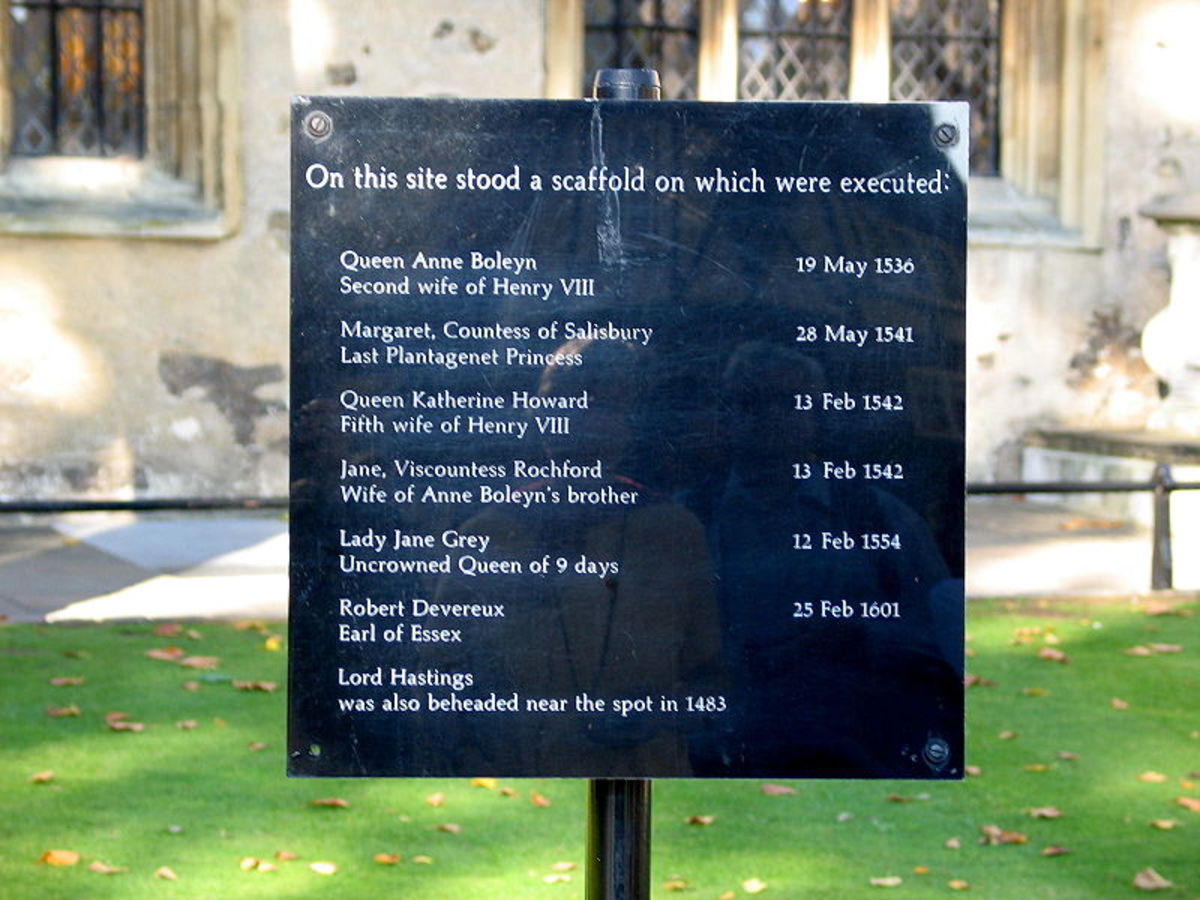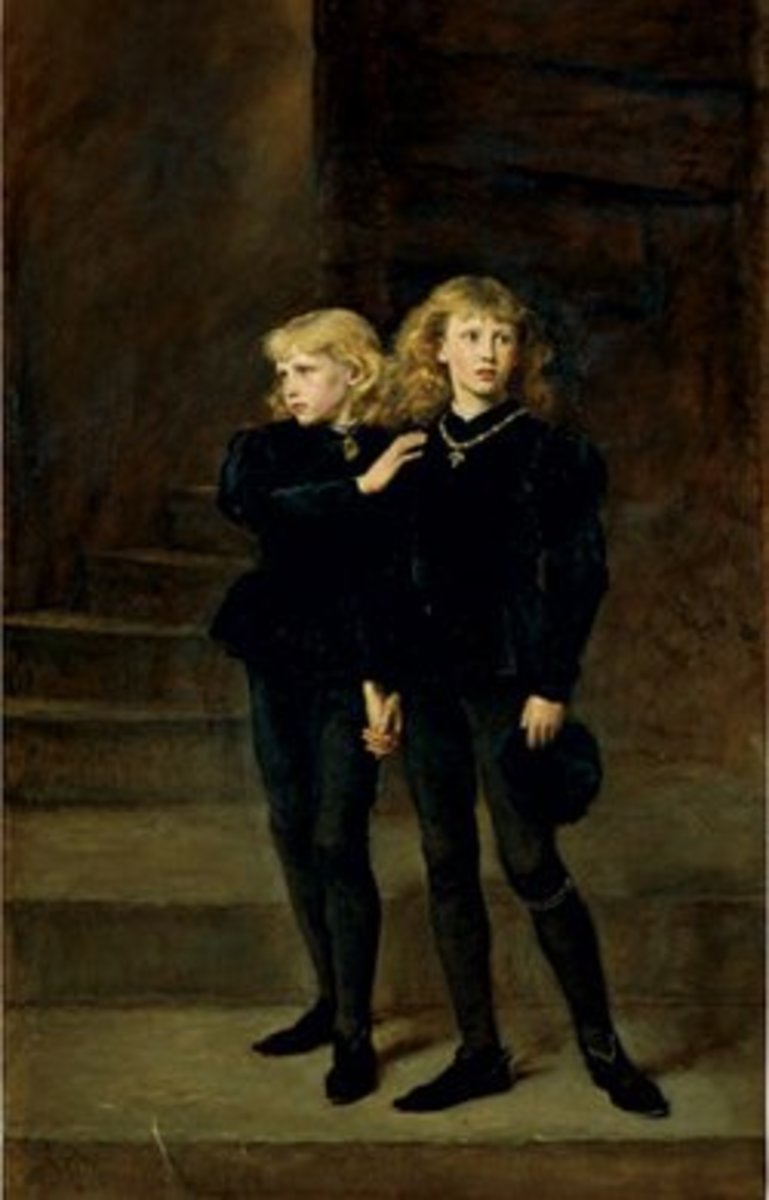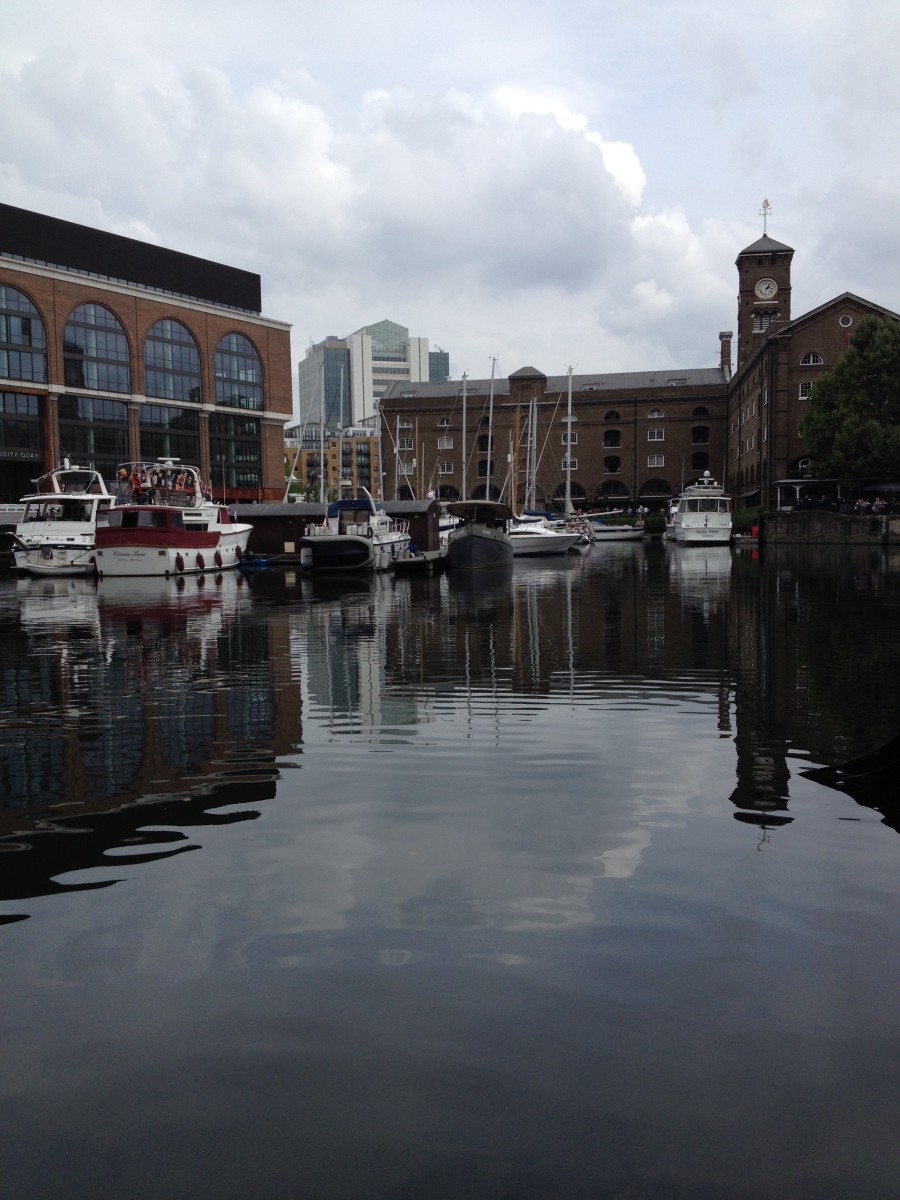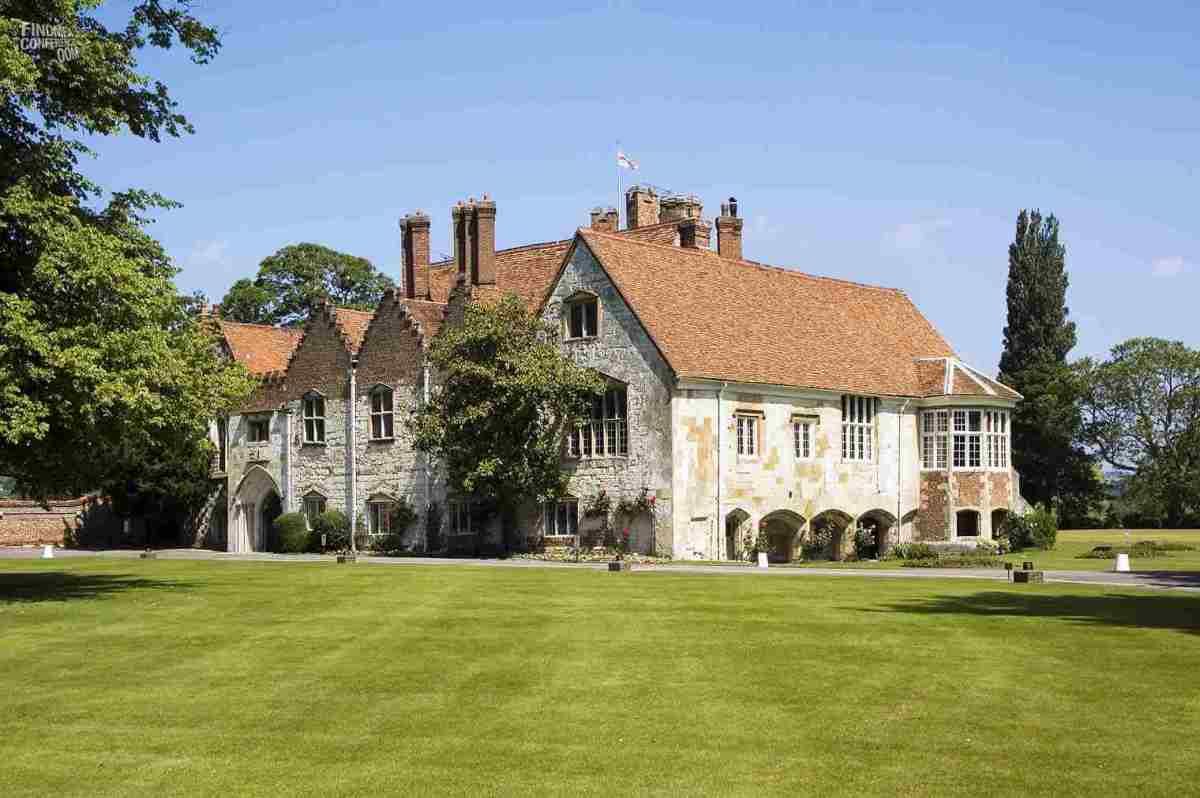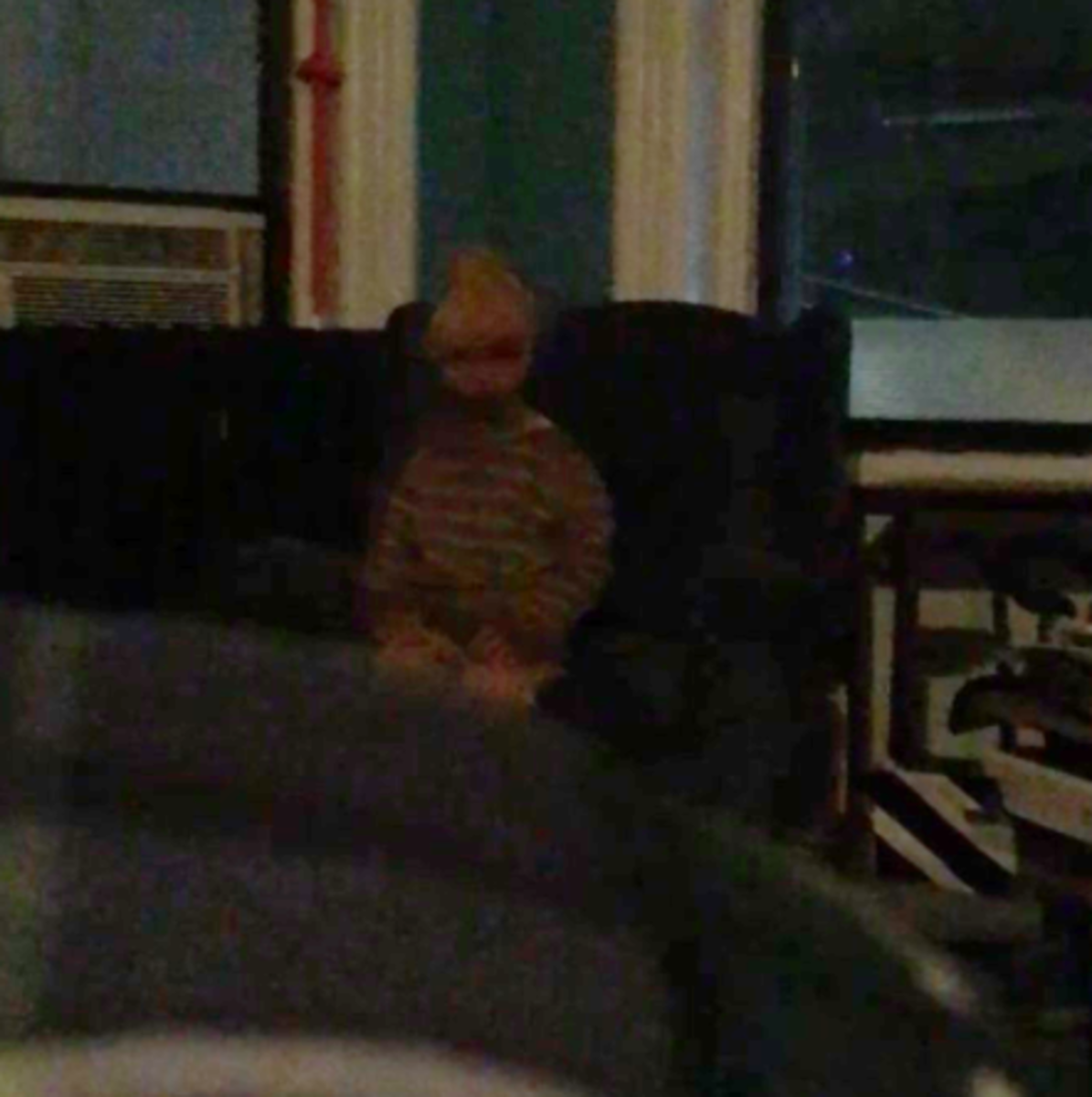Tower Of London
Tower of London
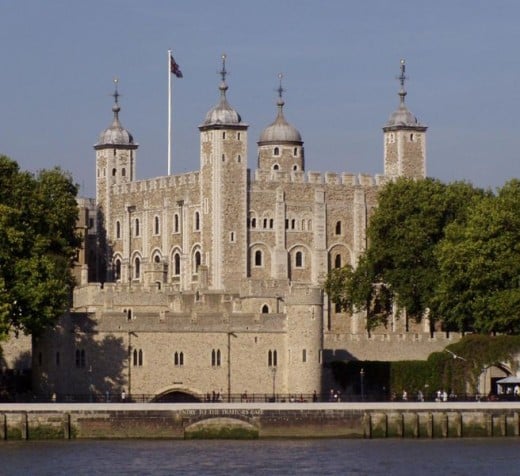
The White Tower and courtyard
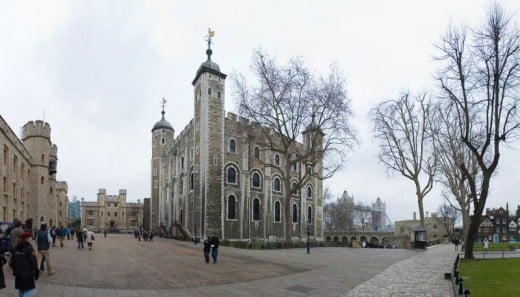
The Traitors Gate, seen from inside the tower walls
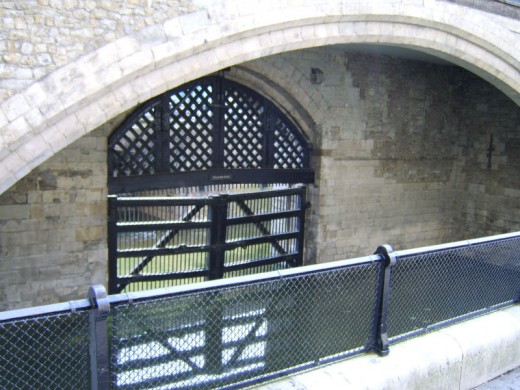
The Traitor's Gate can be reached from the River Thames.
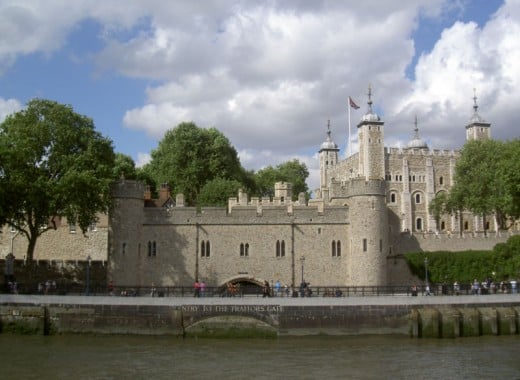
The Tower viewed from the Swiss Re Tower
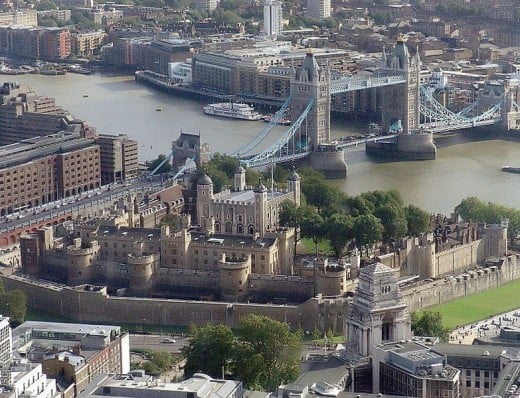
The Spanish Armory exhibition in the Courtyard of the Tower of London.
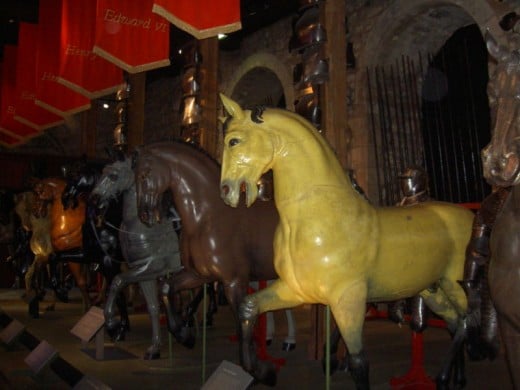
The Middle Tower (centre) guards the outer perimeter entrance across the (now) dry moat
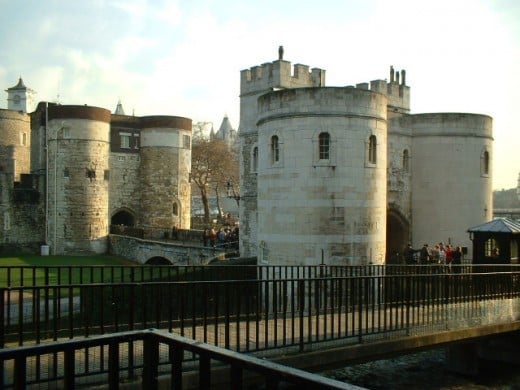
The Battlements, as seen from Tower Bridge approach
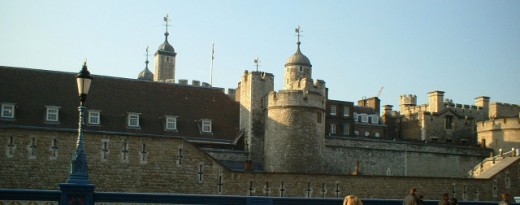
The 15th century Tower in a manuscript of poems by Charles, Duke of Orléans (1391-1465) commemorating his imprisonment there (British Library).
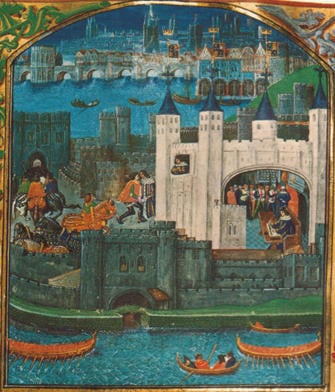
Sentries being posted at the Tower
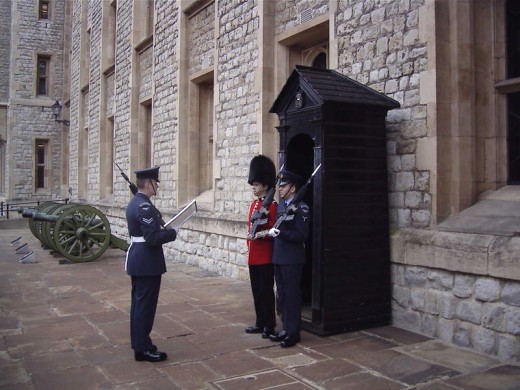
Reconstruction of the interior of the Bloody Tower
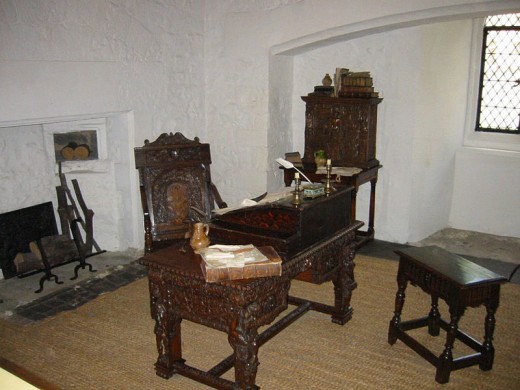
A Tower raven
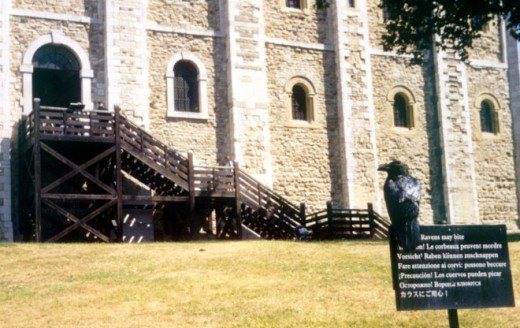
Traitors-gate
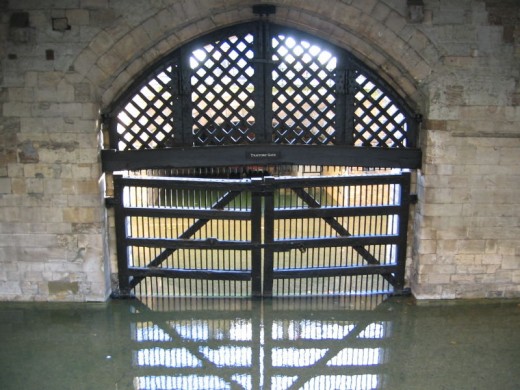
The Tower of London was founded in 1078, when William the Conqueror ordered the White Tower to be built inside the SE angle of the City walls, adjacent to the Thames. This was as much to protect the Normans from the people of the City of London as to protect London from outside invaders. William ordered the Tower to be built of Caen stone, which he had specially imported from France, and appointed Gundulf, Bishop of Rochester as the architect.
Some writers, such as Shakespeare in his play Richard III, have ascribed an earlier origin to the Tower of London and have stated that it was built by Julius Caesar. This supposed Roman origin is a myth, however, as is the story that the mortar used in its construction was tempered by the blood of beasts.
In the 12th century, King Richard the Lionheart enclosed the White Tower with a curtain wall and had a moat dug around it filled with water from the Thames. The moat was not successful until Henry III, in the 13th century, employed a Dutch moat-building technique. This king greatly strengthened the curtain wall, breaking down the city wall to the east, to extend the circuit, despite the protests of the citizens of London and even supernatural warnings (if the contemporary monastic chronicler Matthew Paris is to be believed). Henry III transformed the Tower into a major royal residence and had palatial buildings constructed within the Inner Bailey.
The fortification was completed by between 1275 and 1285 by Edward I who built the outer curtain wall, completely enclosing the inner wall and thus creating a concentric double defence. He filled in the pre-existing moat and built a new moat around the new outer wall.
The Tower remained a royal residence until the time of Oliver Cromwell, who demolished the old palatial buildings.
The Tower of London, Tower Bridge
More About The Tower Of London
Menagerie
A Royal Menagerie was established at the Tower in the 13th century, possibly as early as 1204 during the reign of King John, and probably stocked with animals from an earlier menagerie started in 1125 by Henry I at his palace in Woodstock, near Oxford. Its year of origin is often stated as 1235, when Henry III received a wedding gift of three leopards (so recorded, although they may have been lions) from Frederick II, Holy Roman Emperor. In 1264, they were moved to the Bulwark, which was duly renamed the Lion Tower, near the main western entrance. It was opened as an occasional public spectacle in the reign of Elizabeth I. A lion skull was radiocarbon dated to between 1280 and 1385, making it the earliest medieval big cat known in Britain.By 1804, the menagerie was open to the public. This was where William Blake saw the tiger which may have inspired his poem The Tyger. The menagerie's last director, Alfred Cops, who took over in 1822, found the collection in a dismal state, but restocked it and issued an illustrated scientific catalogue. The menagerie was not to last because the new London Zoo was due to open in Regent's Park. Partly for commercial reasons and partly for animal welfare, the animals were moved to the London Zoo. The last of the animals left in 1835, and most of the Lion Tower was demolished soon after, although Lion Gate remains.
Ravens
It had been thought that there have been at least six ravens in residence at the Tower for centuries. It was said that Charles II ordered their removal following complaints from John Flamsteed, the Royal Astronomer. However, they were not removed because Charles was then told of the legend that if the ravens ever leave the Tower of London, the White Tower, the Monarchy, and the entire Kingdom would fall. Charles, following the time of the English Civil War, superstition or not, was not prepared to take the chance, and instead had the observatory moved to Greenwich.Though recent research by Geoff Parnell, the official historian for the Tower, has found that the earliest record of ravens at the Tower was in 1895, nobody knows when the ravens were first resident in the Tower or when the legend began. Wild ravens, which were once abundant in London, and often seen around meat markets (such as nearby Eastcheap) feasting for scraps, could have roosted at the Tower in earlier times.No one can remember the Tower without Ravens, though during the Second World War most of them perished through shock during bombing raids - the sole survivor being a bird called 'Grip'.However, before the Tower reopened to the public on 1 January 1946, care was taken to ensure that a new set of ravens were in place.There are eight ravens, whose wings are now clipped to prevent them from flying away, and they are cared for by the Ravenmaster, a duty given to one of the Yeomen Warders.The ravens' names/gender/age are (as of November 2006): * Gwylum (M/18 yrs), Thor (M/15), Hugin (F/11), Munin (F/11), * Branwen (F/3 yrs), Bran (M/3), Gundulf (M/1), Baldrick (M/1).The oldest raven ever to serve at the Tower of London was called Jim Crow, who died at the age of 44.In 2006, ahead of the H5N1 avian flu scare, the ravens were moved indoors; as of July 2006, they are once again free to roam about the grounds within the Tower complex.
Prisoners in the Tower
The Tower of London was used as a prison for those of high rank and for religious dissidents. Those of high rank, including prisoners of royal status, were housed in relative comfort. Religious dissidents were however much more severely treated and were often tortured.The first prisoner was Ranulf Flambard in 1100 who, as Bishop of Durham, was found guilty of extortion. Ironically he had himself been responsible for various improvements to the design of the Tower after the first architect Gundulf moved back to Rochester. He escaped from the White Tower by climbing down a rope, which had been smuggled into his cell in a wine casket.Other prisoners include: * John Baliol King of Scotland * David II King of Scotland * John II King of France * Henry VI of England was imprisoned in the Tower, where he was murdered on the 21 of May 1471. Popular legend has accused Richard, Duke of Gloucester of his murder. Each year on the anniversary of Henry VI's death, the Provosts of Eton College and King's College, Cambridge, lay roses and lilies on the altar which now stands where he died. * Margaret of Anjou, wife of the above * Sir William de la Pole. A distant relative of King Henry VIII, he was incarcerated at the Tower for 37 years (1502-1539) for allegedly plotting against Henry VII thus becoming the longest serving prisoner here. * Queen Elizabeth I, imprisoned for two months in 1554 for her alleged involvement in Wyatt's Rebellion. * John Gerard, S.J. (1564-1637) an English Jesuit priest, operating undercover during the reign of Queen Elizabeth I, when Catholics were being persecuted. He was captured and tortured and incarcerated in the Salt Tower before making a daring escape by rope across the moat. * Sir Walter Raleigh spent thirteen years (1603-1616) imprisoned at the Tower but was able to live in relative comfort in the Bloody Tower with his wife and two children. For some of the time he even grew tobacco on Tower Green, just outside his apartment. Here he wrote The History of the World. * Niall Garve O'Donnell Irish nobleman, ironically a one-time ally of the English against his cousin, Red Hugh O'Donnell. * Guy Fawkes, famous for his part in the Gunpowder Plot, was brought to the Tower to be interrogated by a council of the King's Ministers. However, he was not executed here. When he confessed he was sentenced to be hanged, drawn and quartered in the Old Palace Yard at Westminster, however he escaped his fate by jumping off the scaffold at the gallows which in turn broke his neck - killing him. * Johan Anders Jägerhorn, a Swedish officer from Finland, Lord Edward FitzGeralds friend, participating in the Irish independence movement. Spent two years in the Tower 1799-1801, but was released because of Russian interests. * Lord George Gordon, instigator of the Gordon Riots in 1780, spent 6 months in the Tower while awaiting trial on the charge of High Treason. * Rudolf Hess, deputy leader of the German Nazi Party, the last state prisoner to be held in the tower, in May 1941. * The Kray Twins, the last prisoners to be held, for a few days in 1952, for failing to report for national service.
Executions
Lower-class criminals were usually executed by hanging at one of the public execution sites outside the Tower. High-profile convicts, such as Thomas More, were publicly beheaded on Tower Hill. Seven nobles (five of them ladies) were beheaded privately on Tower Green, inside the complex, and then buried in the "Chapel Royal of St. Peter ad Vincula" (Latin for "in chains," making him an appropriate patron saint for prisoners) next to the Green. Some of the nobles who were executed outside the Tower are also buried in that chapel. The names of the seven beheaded on Tower Green for treason are: * William Hastings, 1st Baron Hastings (1483) * Anne Boleyn (1536) * Margaret Pole, Countess of Salisbury (1541) * Catherine Howard (1542) * Jane Boleyn, Viscountess Rochford (1542) * Lady Jane Grey (1554) * Robert Devereux, 2nd Earl of Essex (1601)The Queen Anne Boleyn, beheaded in 1536 for treason against King Henry VIII, is said to be seen walking around the tower carrying her head under her arm. Many tourists over the years have reported seeing her and as late as 1968 a American tourist , a 65 year old man surfered a heart attack after he and his wife saw her walking by them. Would have to be quite a site to see. George, Duke of Clarence, the brother of Edward IV of England, was executed for treason in the Tower in February 1478, but not by beheading (and probably not by being drowned in a butt of Malmsey wine, despite what Shakespeare wrote). When Edward IV died, he left two young sons behind: the Princes in the Tower. His brother Richard, the Duke of Gloucester, was made regent until the older of his two sons, Edward V, should come of age. According to Thomas More's History of Richard III Richard hired men to kill them, and, one night, the two princes were smothered with their pillows. Many years later bones were found buried at the foot of a stairway in the Tower, which are thought to be those of the Princes. Richard was crowned King Richard III of England. The last execution at the Tower was that of German spy Josef Jakobs on the 14 August 1941 by firing squad formed from the Scots Guards. And Josef's ghost has been reported standing around complete with bullet holes many times over the years since his execution. Many tourists have commented on it thinking it is part of some kind of show or part of a exibit.

